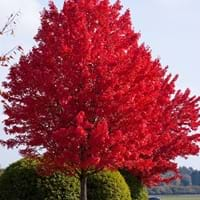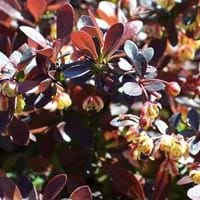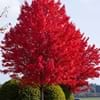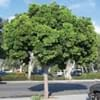Life Span
Perennial
Perennial
Origin
North America, United States, Northeastern United States, Mid-Atlantic United States, Southeastern United States, North-Central United States, Central United States, South-Central United States, Canada
Japan
Types
Autumn Flame, October Brilliance, Tiliford
not available
Habitat
Forests, Wide range of ecological site
All sorts of environments
USDA Hardiness Zone
3-9
4-8
Sunset Zone
A2, A3, 1a, 1b, 2a, 2b, 3a, 3b, 4, 5, 6, 7, 8, 9, 14, 15, 16, 17
A3, 2b, 3a, 3b, 4, 5, 6, 7, 8, 9, 10, 11, 12, 13, 14, 15, 16, 17, 18, 19, 20, 21, 22, 23, 24
Habit
Oval or Rounded
Oval or Rounded
Flower Color
Red
Yellow, Yellow green
Flower Color Modifier
Bicolor
Not Available
Fruit Color
Red, Green, Brown
Red
Leaf Color in Spring
Light Green
Crimson, Dark Red
Leaf Color in Summer
Green, Dark Green
Dark Red, Bronze
Leaf Color in Fall
Yellow, Red, Orange, Yellow green, Gold, Dark Red, Orange Red
Red, Dark Red, Bronze
Leaf Color in Winter
Not Available
Not Available
Leaf Shape
Maple shaped
Acuminate
Plant Season
Spring, Summer, Fall
Spring, Summer, Fall, Winter
Sunlight
Full Sun, Partial Sun
Full Sun, Partial Sun
Type of Soil
Clay, Loam, Sand
Clay, Loam, Sand
The pH of Soil
Acidic, Neutral, Alkaline
Acidic, Neutral, Alkaline
Soil Drainage
Average
Average
Bloom Time
Early Spring, Spring
Spring, Late Spring
Tolerances
Wet Site, Soil Compaction
Pollution, Drought, Salt, Soil Compaction
Where to Plant?
Ground
Ground, Pot
How to Plant?
Seedlings, Vegetative Reproduction
Cuttings
Plant Maintenance
Medium
Medium
Watering Requirements
Water Deeply, Water when top layer of soil becomes dry
Average Water Needs
In Summer
Lots of watering
Lots of watering
In Spring
Moderate
Moderate
In Winter
Average Water
Average Water
Soil pH
Acidic, Neutral, Alkaline
Acidic, Neutral, Alkaline
Soil Type
Clay, Loam, Sand
Clay, Loam, Sand
Soil Drainage Capacity
Average
Average
Sun Exposure
Full Sun, Partial Sun
Full Sun, Partial Sun
Pruning
Remove dead branches, Remove dead leaves
Prune if you want to improve plant shape, Remove damaged leaves, Remove dead branches, Remove dead leaves
Fertilizers
General garden fertilizer, No need to fertilize every year
All-Purpose Liquid Fertilizer
Pests and Diseases
Anthracnose, Bleeding canker, Decline, Fomes root rot, Ganoderma root rot, Laetiporus root rot, Leaf spot, Powdery mildew, Tar spot, Verticillium Wilt
Free of serious pests and diseases
Plant Tolerance
Soil Compaction, Wet Site
Drought, Pollution
Flowers
Insignificant
Insignificant
Flower Petal Number
Single
Single
Foliage Texture
Medium
Medium
Foliage Sheen
Matte
Glossy
Attracts
Not Available
Birds
Allergy
breathing problems, Eczema, flushing of face, Hives, Low blood pressure, Oral cavity, Rapid Heartbeat, Runny nose, Watery eyes
Unknown
Aesthetic Uses
Showy Purposes
along a porch, deck or patio, Borders, Cottage Garden, Informal Hedge, Ornamental use
Beauty Benefits
Not Available
Not Available
Environmental Uses
Air purification, Wildlife
Air purification
Medicinal Uses
Not Available
No Medicinal Use
Part of Plant Used
Whole plant
Not Available
Other Uses
Edible syrup, Used as Ornamental plant
Showy Purposes
Used As Indoor Plant
Yes
No
Used As Outdoor Plant
Yes
Yes
Garden Design
Feature Plant, Shade Trees, Street Trees
Container, Edging, Foundation, Hedges, Mixed Border, Rock Garden, Wall
Botanical Name
ACER rubrum
BERBERIS thunbergii f. atropurpurea 'Crimson Pygmy'
Common Name
Northern Red Maple, Red Maple
Japanese Burberry
In Hindi
लाल मेपल के पेड़
crimson pygmy
In German
Red Maple Tree
crimson pygmy
In French
Red Maple Tree
crimson pygmy
In Spanish
Árbol de arce rojo
crimson pygmy
In Greek
Red Maple Tree
crimson pygmy
In Portuguese
Árvore de bordo vermelho
crimson pygmy
In Polish
Red Maple Tree
crimson pygmy
In Latin
Rubrum Maple ligno
crimson pygmy
Phylum
Magnoliophyta
Magnoliophyta
Class
Magnoliopsida
Magnoliopsida
Order
Sapindales
Ranunculales
Family
Aceraceae
Berberidaceae
Clade
Angiosperms, Eudicots, Rosids
Angiosperms, Eudicots
Tribe
Not Available
Not Available
Subfamily
Not Available
Not Available
Number of Species
Not Available
Not Available
Properties of Red Maple Tree and Crimson Pygmy
Wondering what are the properties of Red Maple Tree and Crimson Pygmy? We provide you with everything About Red Maple Tree and Crimson Pygmy. Red Maple Tree doesn't have thorns and Crimson Pygmy doesn't have thorns. Also Red Maple Tree does not have fragrant flowers. Red Maple Tree has allergic reactions like breathing problems, Eczema, flushing of face, Hives, Low blood pressure, Oral cavity, Rapid Heartbeat, Runny nose and Watery eyes and Crimson Pygmy has allergic reactions like breathing problems, Eczema, flushing of face, Hives, Low blood pressure, Oral cavity, Rapid Heartbeat, Runny nose and Watery eyes. Compare all the properties and characteristics of these two plants. Find out which of these plant can be used as indoor plant. If you are interested to decorate your house and garden, find out aesthetic uses, compare them and select the plant which will beautify your surrounding. Along with beautification, try comparing medicinal and edible uses of Red Maple Tree and Crimson Pygmy and you can choose the plant having best and most benefits.
Season and Care of Red Maple Tree and Crimson Pygmy
Season and care of Red Maple Tree and Crimson Pygmy is important to know. While considering everything about Red Maple Tree and Crimson Pygmy Care, growing season is an essential factor. Red Maple Tree season is Spring, Summer and Fall and Crimson Pygmy season is Spring, Summer and Fall. The type of soil for Red Maple Tree is Clay, Loam, Sand and for Crimson Pygmy is Clay, Loam, Sand while the PH of soil for Red Maple Tree is Acidic, Neutral, Alkaline and for Crimson Pygmy is Acidic, Neutral, Alkaline.
Red Maple Tree and Crimson Pygmy Physical Information
Red Maple Tree and Crimson Pygmy physical information is very important for comparison. Red Maple Tree height is 1,220.00 cm and width 1,220.00 cm whereas Crimson Pygmy height is 45.70 cm and width 61.00 cm. The color specification of Red Maple Tree and Crimson Pygmy are as follows:
Red Maple Tree flower color: Red
Red Maple Tree leaf color: Light Green
Crimson Pygmy flower color: Yellow and Yellow green
- Crimson Pygmy leaf color: Crimson and Dark Red
Care of Red Maple Tree and Crimson Pygmy
Care of Red Maple Tree and Crimson Pygmy include pruning, fertilizers, watering etc. Red Maple Tree pruning is done Remove dead branches and Remove dead leaves and Crimson Pygmy pruning is done Prune if you want to improve plant shape, Remove damaged leaves, Remove dead branches and Remove dead leaves. In summer Red Maple Tree needs Lots of watering and in winter, it needs Average Water. Whereas, in summer Crimson Pygmy needs Lots of watering and in winter, it needs Average Water.





